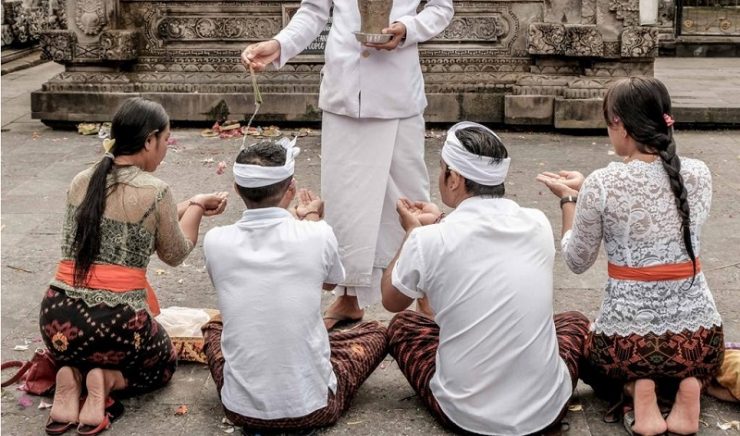TOURISM has been the main driver of Bali’s economy since Indonesia was still colonized by the Dutch. Historical records show that the tourism industry in Bali began to develop rapidly in the 1930s as was proven by the visits of celebrities, one of which was Charlie Chaplin, then world-renowned painters, such as Walter Spies, Miguel Covarrubias, and Rudolf Bonnet, who lived for a long time in Bali and made the Island of the Gods as an inspiration for his famous works.
Bali started its fame on the world stage when the Dutch East Indies government built a replica of a traditional Balinese house and presented about 50 dancers and musicians at the Paris Colonial Exhibition in 1931.
That exhibition, which showcased the culture and natural wealth of colonized countries in Asia, Africa, and Latin America, lasted for six months and garnered 33 million visitors.
Bali then became one of the popular tourist destinations in Asia, supported by the Dutch East Indies government’s tourism office (VTV) in Batavia (Jakarta). At that time, VTV promoted Bali as “The Lost Paradise”.
Bali’s situation did not change much after Indonesia gained its independence. Bali’s beauty was still a magnet for foreign tourists. The only difference, after independence, was that Indonesian and Balinese people were not just objects that were “sold” to foreign tourists for watching. Balinese began to start and own businesses and made the most of the tourism potential.
Political dynamics and grassroots conflicts during the transition of power from the Old Order to the New Order government as well as natural disasters did not dampen the enthusiasm of foreign tourists to visit Bali.
However, the growth in the number of tourist visits and the proliferation of tourism-based industries on the island have affected the relationship within the Balinese society, culture, and also nature conservation.
Several rice fields, which supported food security in Bali and even the country, have been converted into hotels, villas, luxury resorts, restaurants, cafes, and entertainment venues.
As a result, problems began to occur on the island, starting from gentrification, overflowing waste, cultural and traditional practices being left behind, and water supply problems to crimes. These various issues have spurred Bali tourism business players to restore balance in Bali.
To this end, one of the steps to do is to return Bali’s tourism to its roots that must align with Bali’s life and the people’s philosophy of Tri Hita Karana.
Tri Hita Karana
Tri Hita Karana upholds the balance of the relationship between human and God (parahyangan), human and fellow human beings (pawongan), and human and nature (palemahan).
Since 2020, when Bali Provincial Regulation No. 5 of 2020 concerning Standards for the Bali Cultural Tourism Implementation was issued, local governments have made Tri Hita Karana and local wisdom Sad Kerthi as a reference in conducting tourism practices.
The regulation, signed by Bali Governor I Wayan Koster, stipulates that tourism practices should be oriented towards sustainability principles.
Meanwhile Chair of the Alliance of Bali Marginal Tourism Actors, I Wayan Puspa Negara, explained that tourism in Bali has prioritized the balance of nature based on Tri Hita Karana.
“When talking about destinations in Bali, most of them are natural destinations in which there are living cultures because Balinese culture is sourced from agriculture. Hence, if there is no agriculture, there is no Balinese culture. Nature plays an important role in terms of Bali’s destinations,” he added.
Hence, he said, tourism practices in Bali cannot be separated from the Tri Hita Karana philosophy, as it is what makes it sustainable.
Environmental and cultural preservation will happen if agriculture and nature are maintained. Hence, Negara said his side seeks to strike a balance between agricultural development and tourism development.
He affirmed that a strong agriculture system will result in plentiful food production and sustain the ecosystem.
According to Negara, Bali’s remaining rice fields must be protected, as land conversion remains the main threat. He highlighted the need to improve spatial governance in Bali.
Nusa Dua as example
State-run Indonesia Tourism Development Corporation (ITDC) is committed to applying the Tri Hita Karana philosophy in managing the Nusa Dua area.
General Manager of The Nusa Dua I Gusti Ngurah Ardita stated that Tri Hita Karana is a concept that is inseparable from the area planning, development, management, and maintenance.
“We have a master plan that has the layout of buildings that is based on the concept of Bali Tri Hita Karana. In the Nusa Dua area, there are palemahan, pawongan, and parahyangan,” he revealed.
The concept of palemahan is applied to the greening zone, and pawongan in the hotel area, while the parahyangan concept is where places of worship in the area will not be touched in the development, Ardita elaborated. Hotels built in the Nusa Dua area must comply with the master plan and ITDC’s block plan.
“We have a community design, the hotel buildings here strongly implement the Balinese building layout, starting from the height rules, and the architectural style also combines modern architecture and Balinese architecture,” Ardita remarked.
Nine temples are located in the Nusa Dua area, and one of them is in the Grand Hyatt Hotel, which the community manages instead of the hotel. During the melasti ceremony, people will flock to the temple inside the hotel.
Tourism can go hand in hand with the Balinese life rooted in the Tri Hita Karana philosophy that preserves nature and maintains harmonious relations between people and tourists as well as the relationship with God. [antaranews/photo special]
















